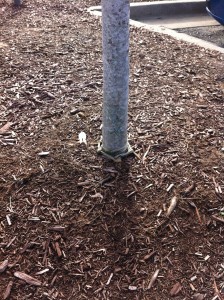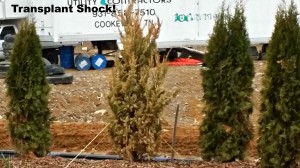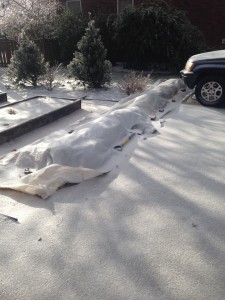They should have known better…It only takes a minute.
A landscape contractor (professional) overlooked the red maple above and the one next to it. What am I writing and ranting about? The lacing that holds soil-grown trees together. Sometimes there is a wire basket holding the soil and burlap together.
Either way, always cut the strings around the stems of a soil-grown tree or shrub. Always. But, wait…before you do, is the tree stable?
Don’t cut the string until the plant has settled into the soil. After install, sometimes a plant will sway one side or another due to wind and rain. It’s easy to straighten the tree before you cut the string. After, be careful moving the stem. If you hear popping noises, then roots are snapping.
The red maple above has been planted for over a year. This is plenty of time for the area to stabilize. Someone made a big mistake. Lucky for them I happened to come by and fix the problem.
Why cut the string at all, you’re thinking…? The string will eventually strangle the cambium layer of the stem. This effectively chokes stems and branches of receiving nutrients. It’s not uncommon to see this.
There are 1000 details to growing plants well. Don’t forget this one.
Have you ever seen this problem in the landscape? Let me know in the comments below.







